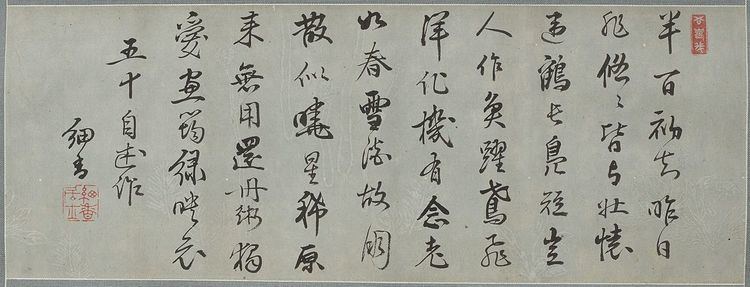Died 7 October 1861 | Parents Ema Ransai | |
 | ||
Books Breeze Through Bamboo: Kanshi of Ema Saikō People also search for Ema Ransai, Reiko Kado, Sensuke Iritani | ||
Ema Saikō (1787–1861) was a Japanese painter, poet and calligrapher from the late Edo period. Raised in Ōgaki, Gifu, her father was a doctor and scholar who taught her basic calligraphy and painting at a young age (there are extant works from when she was as young as 5 years old). She initially studied painting under the monk Gyokurin, specializing in bamboo painting. In 1813, she met Rai San'yo and he agreed to become her poetry and calligraphy teacher. She traveled to Kyoto once every several years to meet with San'yo and study. He introduced her to many bunjinga from Kyoto and encouraged her to move there, however her brother-in-law died in 1820 which forced her to remain home to take care of the family.
Saiko produced paintings, poetry and calligraphy throughout the 1820s-1850s, gaining fame both in her hometown as well as in Kyoto and becoming one of the first women bunjinga to gain widespread recognition. Her bamboo paintings were distinguished by their crisp and clear brushwork. Later in her career she began to produce fuller landscape paintings which used a unique method of combining dry brushstrokes with washes. Never married, many of Saiko's poems suggest she was saddened by her solitary life. Other work is more cheerful and draws from nature imagery. She also took pride in the work of other female artists of the era: one of her scrolls listed paintings and calligraphy from 22 different women which Saiko owned.
In 1856, she suffered a cerebral hemorrhage which severely affected her health. She produced paintings for the Toda clan and was invited to Ōgaki Castle to be recognized for her work, but suffered a stroke in 1861 and died later that year.
